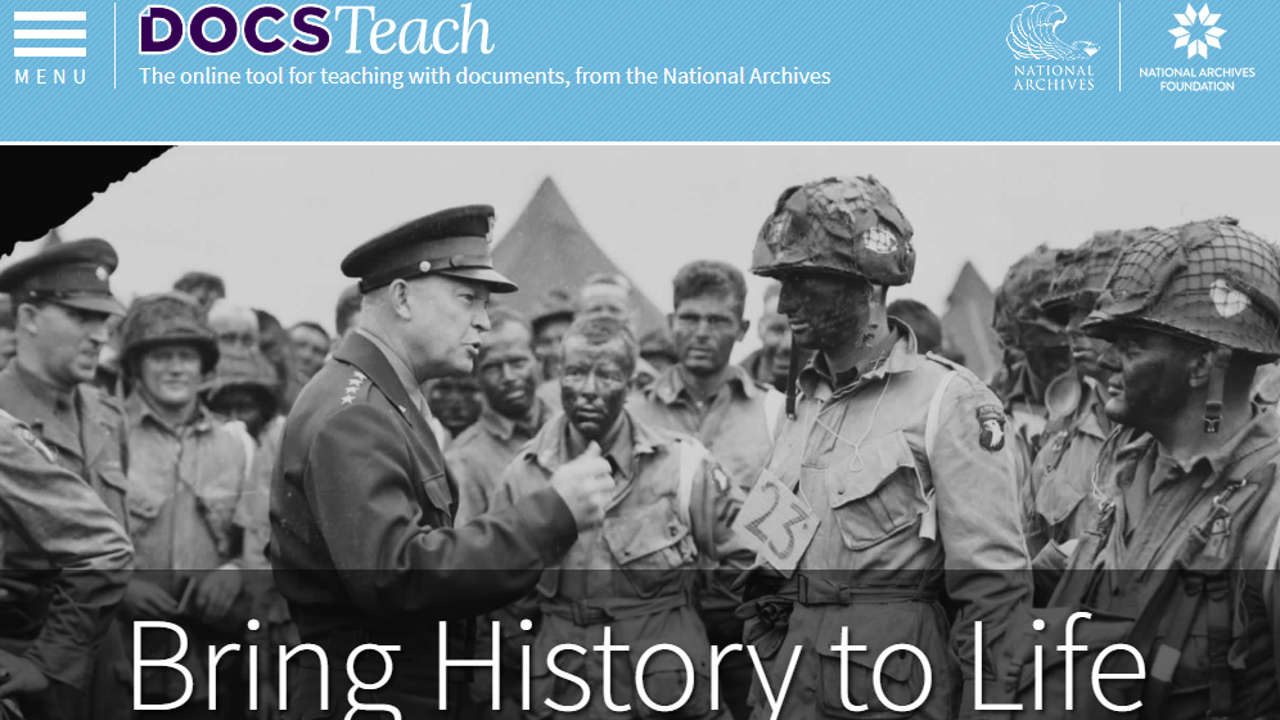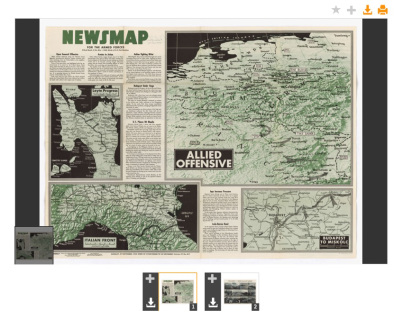Not using DocsTeach!? We need to talk

Okay. I know some of you are using DocsTeach.
And why not?
Using primary sources from its collection, the crack National Archives education staff has been creating and sharing quality lessons for eight years. The idea at DocsTeach is simple – provide high-quality lessons and activities based on primary sources and focused on building historical and critical thinking skills.
You can borrow from an ever-expanding collection of document based activities built by National Archives specialists and teachers around the world. Use or modify ready-made activities. Craft, save, and share your own using online tools like these:
Whether you use the pre-made activities or creating your own, DocsTeach is perfect for classroom demos, small group or whole class work, and individual in-class or homework assignments. Your kids can return their work via your DocsTeach account, Google Classroom, or the DocsTeach App for iPad.
Did we mention that it’s free?
So . . . seriously. If you’re not using DocsTeach, you and I need to chat. Cause it’s awesome and your job is difficult enough without having to muck around online looking for useful tools.
Tools and ideas to transform education. Sign up below.
If you’re new to DocsTeach, head over here for a bit longer overview. Then bounce over to their Getting Started page. If you’ve been using DocsTeach, high five. You already know it’s awesome and that the DocsTeach team is always adding new stuff.
So scroll down for some of their latest awesomeness:
September 17 is designated Constitution Day. Many of you are asked to deliver activities and lessons specific to founding documents during that week but it can sometimes be difficult finding useful resources. DocsTeach has got you covered. Use the special DocsTeach Constitution page to teach checks and balances, separation of powers, amendments, and more with primary sources and online activities.

World War II Era “Newsmaps”
Issued weekly by the U.S. Army, Newsmap was distributed to the military and provided news about the progress of war. They were designed for posting on bulletin boards or other display areas, and include information, photos, illustrations, and maps. These are super helpful for building context with your kids.

The Slave Trade
These newly digitized documents provide evidence of the slave trade in the United States before the “Act Prohibiting the Importation of Slaves” took effect in 1808, illegal trading after the act, the Amistad case, and the legal domestic trade between U.S. ports that persisted until the Emancipation Proclamation and 13th Amendment.

Foreign Affairs Political Cartoons
These cartoons cover American foreign policy from the Spanish American War to the start of World War II. Clifford Berryman, one of Washington, DC’s best-known cartoonists in the early to mid-1900s, drew for the Washington Post and Evening Star newspapers.

The 1918 Flu Pandemic
These photographs and documents relate to the 1918 Influenza Pandemic, also known as the Spanish Flu. One fifth of the world’s population was infected. The epidemic killed an estimated 50 million people around the world, more than died in World War I.

World War II Foreign Posters
Produced by foreign information offices and war relief associations in the United States, these posters cover topics like: children, conservation, employment, victory bonds, black markets, propaganda, recruitment, and sabotage.

Some extra bonus DocsTeach info:
They offer professional development webinars. You can request live webinars. Topics may include:
Check out a few basic tools:
cross posted at glennwiebe.org
Glenn Wiebe is an education and technology consultant with 15 years' experience teaching history and social studies. He is a curriculum consultant for ESSDACK, an educational service center in Hutchinson, Kansas, blogs frequently at History Tech and maintains Social Studies Central, a repository of resources targeted at K-12 educators. Visit
glennwiebe.org to learn more about his speaking and presentation on education technology, innovative instruction and social studies.
